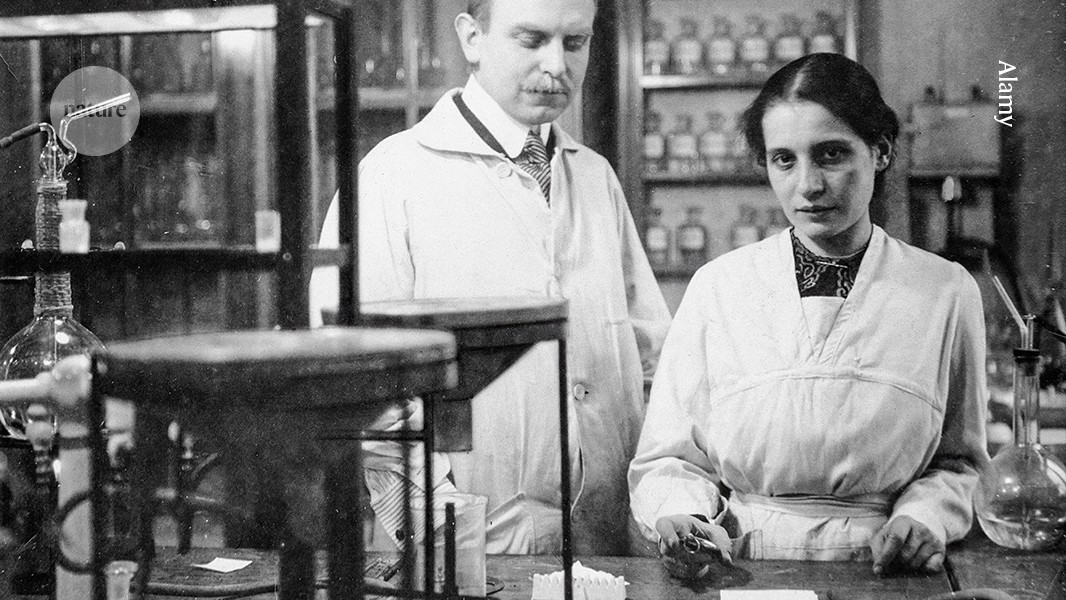Physicists unleashed the power of the atom — but to what end?

From laboratory quirks to Earth-shattering weapons, a chain of discoveries reached a devastating conclusion
Destroyer of Worlds: The Deep History of the Nuclear Age Frank Close Basic (2025)
First, let’s clear up some potential confusion: in Destroyer of Worlds: The Deep History of the Nuclear Age, ‘deep’ in the subtitle means, not the minutiae of historic events, but ‘scientific’. Physicist Frank Close’s latest book discusses the physics and chemistry behind nuclear weapons — that is, the understanding of the atom and the energy it holds. The story begins with the discovery of electric currents that couldn’t be blocked by solid materials and ends with the technological ability to blow cities off the map.
Barrage of discoveries
Knowledge is passed from one scientist to another, and from one country to another. In Germany, in the 1890s, Wilhelm Röntgen found electric currents, which he called X-rays, that passed undeterred through nearly everything, including his own and his wife’s hands.
In France, Henri Becquerel, wondering whether X-rays were related to phosphorescent minerals such as uranium, left uranium crystals and a copper cross on a photographic plate in a dark drawer for several days. When developing the plate, he found a clear outline of the cross, as though, in the dark, uranium acted like the Sun.
Meanwhile, in Canada, Ernest Rutherford measured the energy released from uranium through a process that had been named radioactivity. He argued that atoms of radioactive elements, such as uranium, radium and thorium, contained enough energy to give off heat for thousands of years.
In the early twentieth century, scientists — including Marie and Pierre Curie, Irène and Frédéric Joliot-Curie, Albert Einstein, Otto Hahn, Lise Meitner, J. J. Thomson, James Chadwick, Niels Bohr, Ettore Majorana, Enrico Fermi, Rudolf Peierls, Leo Szilard, Edward Teller and Hans Bethe — tried to understand how atoms stored and released that energy. They demonstrated that atoms of radioactive elements disintegrate naturally and, in the process, change from one element into another.
Such disintegration indicated the “existence of bodies smaller than an atom” and, through careful experiments, researchers subsequently found the electron and the atom’s nucleus. Next, they broke apart the nucleus, discovering the proton and, later, the neutrons that accompany it to account for an atom’s mass. These nuclear particles clung together tightly, so the scientists invented machines that could prise them apart and track what happened when they did. They found that a neutron fired into a lithium nucleus splits it into a helium nucleus, a tritium nucleus and an extra neutron.
In effect, the machines were artificially inducing radioactivity, first in light elements and then in heavy ones. The scientists knew that radioactive heavy elements broke up naturally into elements one or two steps lower on the periodic table — uranium, element 92, for example, became thorium, element 90. But when scientists fired neutrons into uranium, it became barium, element 56: the nucleus was split almost in half.
Researchers worked out that this happened through a process they called fission: incoming neutrons add enough energy to the uranium nucleus to divide it. During that process, uranium releases neutrons, which can go on to split other uranium nuclei — releasing further neutrons that can split more nuclei, in an exponentially growing chain reaction. The energy freed from having to hold the nucleus together was the nuclear mass times the square of the speed of light — a very large number.
Building a bomb
Fission surprised the scientists and they all talked about it at conferences and in letters and publications. The idea of a bomb was obvious. Bohr published the underlying physics (N. Bohr and J. A. Wheeler Phys. Rev. 56, 426; 1939) on 1 September 1939, the day that Germany invaded Poland, kicking off the Second World War. Six months later, in March 1940, Fermi and Peierls wrote a letter to the UK government outlining the boundary conditions under which we still live: mutually assured destruction. This meant that “while they hoped that no civilised nation would use such a device, they feared that the only protection against one would be to have one oneself”.
Maybe, if the world hadn’t been at war, the next step would have been to design nuclear power plants to generate cheap, widely available energy. But Germany had its own nuclear physicists working on bombs. The book now switches from physics to the technology of the bombs, a story many people know but that remains riveting.

In October 1952, the United States tested a 10-megatonne fusion bomb, named Ivy Mike.Credit: Alamy
The scientists found that the most fissionable elements were uranium isotope 235 and plutonium isotope 239. They worked out how to concentrate the former and create the latter, and how much of each was needed to produce bombs. They built reactors in which chain reactions could be controlled. The job of turning uranium and plutonium into bombs turned out to be beyond the United Kingdom’s resources, so the nation sent scientists to what became a major US industry: the Manhattan Project. It involved not only UK and US scientists, but also their graduate students and postdocs and Jewish scientists fleeing continental Europe — 100,000 people altogether, with an average age of 24.
Login or create a free account to read this content
Gain free access to this article, as well as selected content from this journal and more on nature.com
or
Sign in or create an accountNature 643, 1180-1182 (2025)
doi: https://doi.org/10.1038/d41586-025-02350-y
This story originally appeared on: Nature - Author:Ann Finkbeiner














